The banana is the most widely produced and widely consumed fruit in the world. Americans tend to consider them to be a product that’s grown in Central and South America and exported to the U.S.
However, most bananas are eaten close to where they’re grown because the luscious yellow fruit is an important dietary staple in much of the world, particularly in poor countries.
The banana originated in Southeast Asia, and the three top banana producing are Asian countries, but Africa and Latin America are big players as well.
What country produces the most bananas?
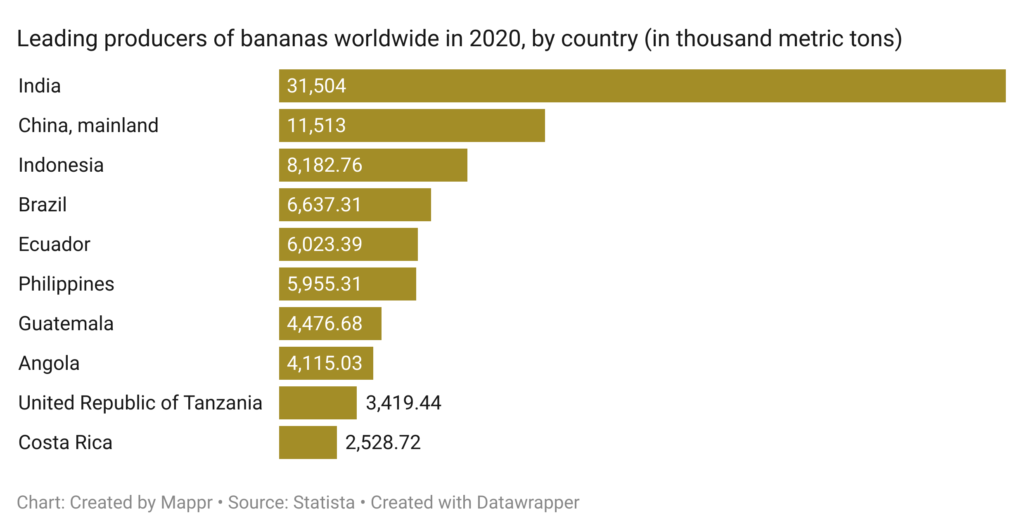
Here are the world’s 10 big players in banana production by country:
1. India
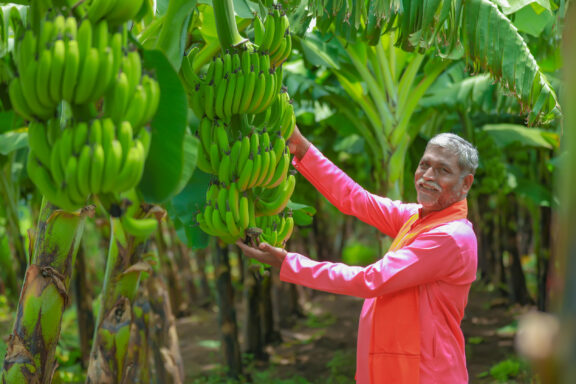
Bananas got their start in or near India, and today India is the world’s largest banana producer by far, growing over 31 million tons a year.
Most bananas grown in India are eaten in India. Growing regions include the northeast and the south, but the west central state of Maharashtra leads the way.
More than half of the nation’s bananas are Cavendish, which is the world’s most widely cultivated variety. However, there are dozens of varieties grown both on large commercial properties and in small homestead gardens. The banana is one of India’s most important fruits, second only to the mango.
Apart from being the biggest producer, India is also the biggest consumer of bananas in the world.
2. China
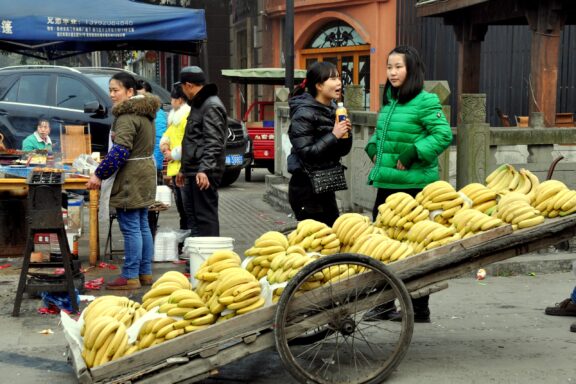
China is in second place, but with only about a third of the production of India at just over 11 million annual tons. Bananas had been cultivated in China for centuries but didn’t become an important cash and trade crop until the 1980s, when private business became permissible in the communist country.
Most bananas are grown in the south, mainly in Guandong, Guangxi, Yunnan and Hainan. The banana trade began to open up when the fruit became a novelty in the north, often purchased for gift-giving on special occasions.
As entrepreneurship has grown in China, the Cavendish variety has become increasingly preferred, as it’s suitable for sale in both domestic and international markets.
3. Indonesia
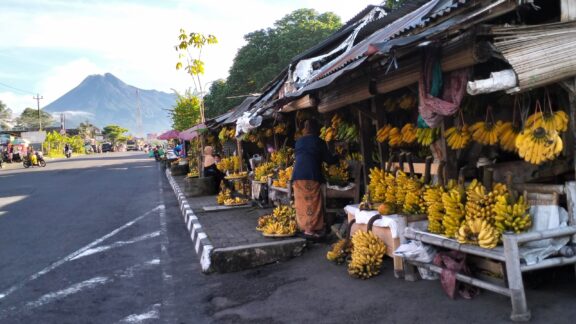
The banana is the most widely cultivated fruit in Indonesia and also the most important. Annual production exceeds 8 million tons. As with the other major Asian producers, most of the fruit is consumed domestically.
In addition to the Cavendish, Indonesia grows Mas, Ambon, Kepok, Tanduk and Raja Bandung. The major growing regions are Lampung, East Java and West Java. Indonesian Papua in the east boasts some of the largest banana trees in the world.
4. Brazil
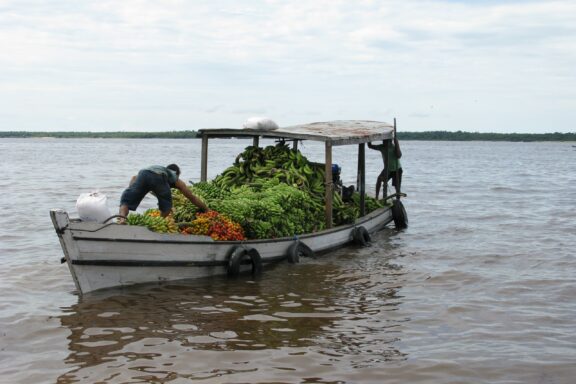
Brazil is the largest producer of bananas in South America, but it’s not a leading exporter. About 95 percent of its over 6 million tons of annual production is consumed domestically.
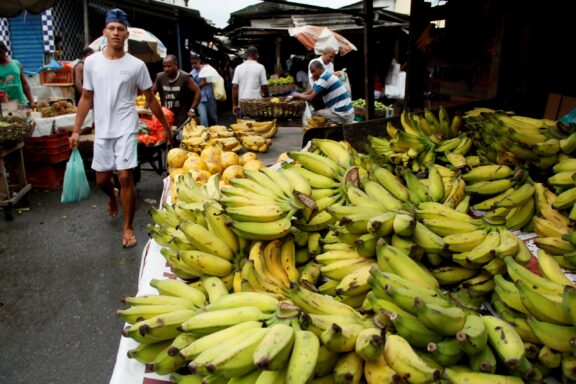
The leading banana region is in the southeastern state of Sao Paulo, although there’s also significant cultivation in the northeast. Just over half of the national production is Cavendish, but Prata, Plantains and Apple Banana are also widely grown.
Bananas are grown year-round in Brazil and are eaten by Brazilians of every social and economic class. The per capita annual consumption is around 55 pounds.
5. Ecuador
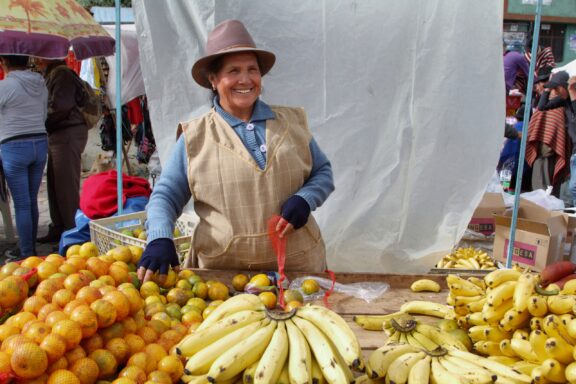
Ecuador may not be the world’s largest banana producing country at about 6 million tons, but it’s the largest exporter. Only petroleum is a more important export product for the country.
Ecuador sends more than 60 percent of its output abroad, most to the U.S. and Western Europe but also to Russia and Asia.
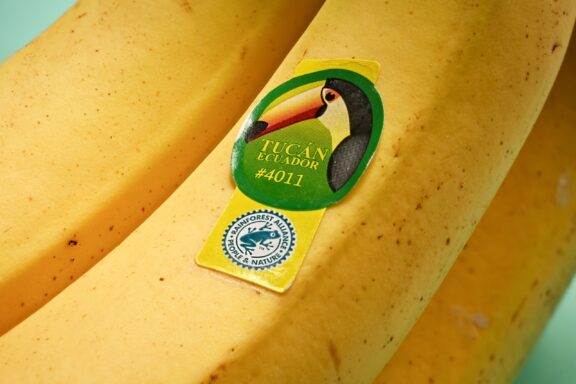
Much of the production is controlled by large planters, often on land that formerly grew cacao. However, a significant amount of the crop is produced by small growers who export their bananas through a cooperative system.
The biggest growing provinces are Los Rios, El Oro and Guayas. The main varieties are Cavendish, Plantain, Apple Banana and Orito. Ecuador is unique among banana-growing countries in that it has a minimum price that must be paid to growers.
6. Philippines
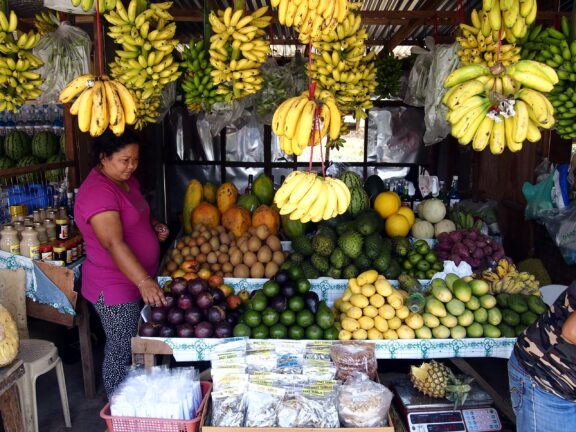
The Philippines grows about 6 million tons of bananas each year. Just over half are Cavendish, and the variety is grown mostly for market, both domestic and international.
Saba and Lakatan varieties make up much of the rest of the commercial production. Most fruits are grown on the Island of Mindano, and Davao, Northern Mindano and Soccskargen are the main regions.
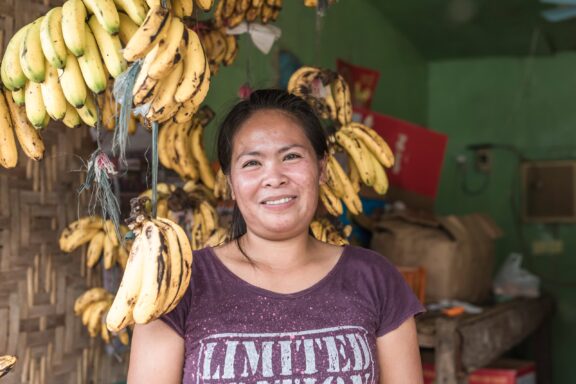
Bananas for export, which make up about a third of production, are grown mostly by Filipino companies and multinationals. Smaller farmers often sell to these companies or directly to traders. Local farmers grow largely for local consumption and raise as many as 90 different cultivars.
7. Guatemala
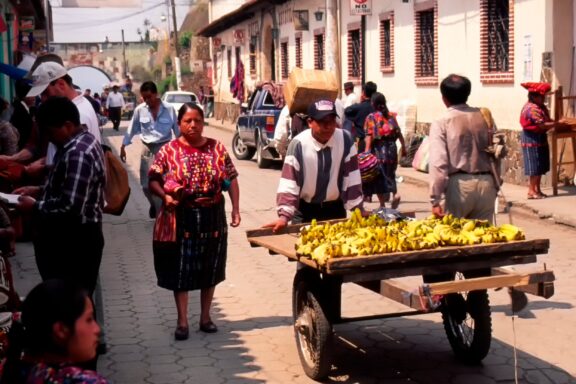
A big push in the 1990s led to Guatemala becoming a leading player in the international banana trade. It produces over 4 million tons a year and supplies a significant portion of North American imports.
At one time most production was on the Caribbean coast, but the rapid export-driven expansion moved most of the cultivation to the Pacific coastal plain.
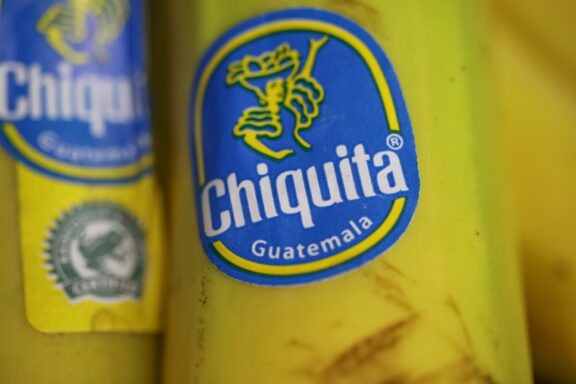
The Guatemalan banana international marketing effort has been extensive and successful, achieving unequaled production costs and focusing primarily on the U.S. market. As growth has leveled off, the country has begun to reach out to the European market as well. The main varieties are Cavendish, baby bananas, pink bananas and plantains.
8. Angola
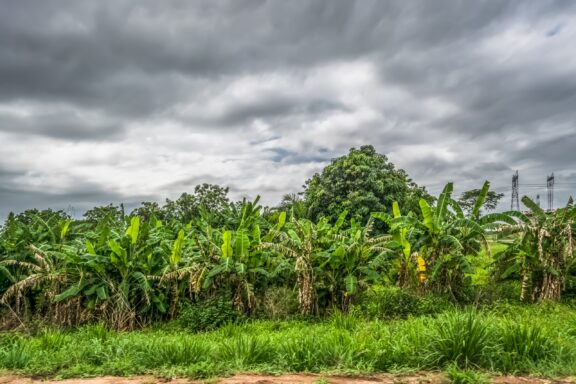
The 27-year civil war destroyed Angola’s banana trees to the point that it was actually importing the fruit in the early 21st century. For years afterward the government’s priority was reviving its oil sales and it took a while to gear up agricultural production. In the past decade, however, there’s been a huge banana recovery.
Angola now grows 4 million tons of bananas a year and since the mid-teens has been Africa’s largest producer of bananas. The country is now eyeing the export market and plans to start shipping to the United States. Most growing takes place in the Beno and Benguela provinces, and the Cavendish is the dominant variety.
9. United Republic of Tanzania
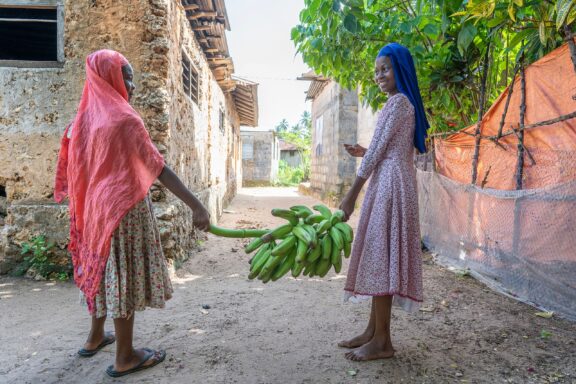
Bananas are a staple of the Tanzanian diet, and the majority are grown in the regions of Kagera, Kilimanjaro and Mbeya. The government is working to increase banana production, which is now at about 3.5 million tons.
Like Angola, Tanzania is looking for opportunities to export. While most sales are still domestic, farmers are beginning to partner with exporting buyers, and some fruit is being sold in Kenya and other countries.
Tanzania has started growing hybrids of an important cooking banana, the Matooke, and these are more resistant to disease and pests. Tanzanian banana trees are often intercropped with coffee, cassava, maize or beans.
10. Costa Rica
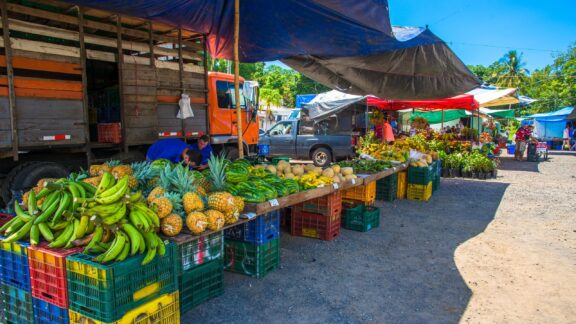
Costa Rica was the first Central American country to grow bananas, starting in 1878. Banana production and export is a highly organized industry dominated by Chiquita, Del Monte, Dole and the Costa Rican company Grupo Acon.
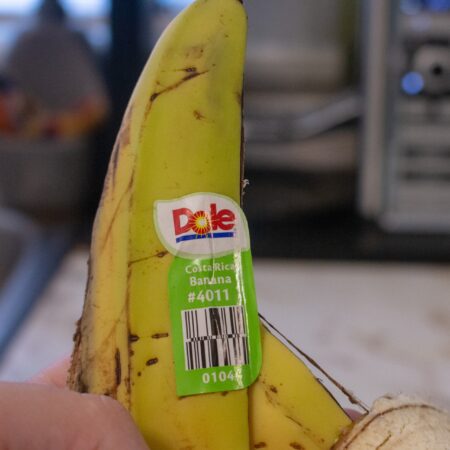
More than 40,000 people work in banana growing nationwide, producing 2.5 million tons annually. There are more than 100,000 plantation acres in production. Most of these are on the Caribbean coast, but there are some near the Pacific as well. Leading varieties and Cavendish, Grand Enano, Criollo and Grand Nain.
FAQ
Where are bananas grown in the US? Why is the US not a top producer?
Hawaii is the leading producer, followed by Florida. Due to high labor and land costs, the prices aren’t competitive with imported bananas, and most American bananas are sold locally.
How big is the US banana production?
US banana production is minuscule compared to major producers at under 20,000 tons per year. That’s why you’re not likely to see an American banana in a supermarket.
What’s the biggest banana production company in the world?
US-based Chiquita Company is the world leader. Dole and Del Monte are also major players.
Which country is the largest banana exporter?
Ecuador leads the world in banana exports and is consistently working to increase its market share. The Philippines, Guatemala and Costa Rica are also big exporters. The Latin American companies benefit from their proximity to the United States.
How big is the biggest banana in the world?
The largest banana trees are found in the West Papua region of Indonesia. Their scientific name is Musa ingens, but the local name is ndowin or apit sepoh. Some Musa varieties can grow up to 50 feet, about seven times the height of an average banana tree. The fruit isn’t particularly long, but it’s large in circumference.
The largest banana fruit may be an African variety called the Rhino Horn Plantain, which can be up to two feet long.
Banana: A True World-Wide Fruit.
No one knows exactly how long bananas have been around, but they’ve been feeding the human race since people first picked and peeled them in Southeast Asia. Around the end of the 14th century they became an international trade commodity. They’re one of the cheapest fruits, and they’re consumed all over the world.
The Cavendish has become the standard banana of commercial sales. Some experts worry about the excessive reliance on the Cavendish and would like to see more types traded internationally. There are over 1,000 different varieties of bananas grown by small farmers and eaten near where they’re produced. As long as bananas are delicious and nutritious, they’ll continue to be a staple of the world’s diet and a leading commodity of international trade.
Banana Producing Countries on the World Map
Image Sources and Copyright Information
- Farmer with Banana Bunches in Plantation: © PRASANNAPIX/Shutterstock
- Street Vendor Selling Bananas in a Chinese Market: © LEE SNIDER/Shutterstock
- Banana Market Stalls with Mountain in the Background: © FKha/Shutterstock
- Boat Loaded with Bananas on a River in Brazil: © guentermanaus/Shutterstock
- Brazilian Banana Market Stall: © Joa Souza/Shutterstock
- Banana Vendor at Ecuadorian Market: © Marisa Estivill/Shutterstock
- Close-up of Bananas with Sticker: © K I Photography/Shutterstock
- Fruit Vendor at a Market Stall in the Philippines: © junpinzon/Shutterstock
- Smiling Woman Selling Bananas at a Market Stall: © MDV Edwards/Shutterstock
- Street Vendor Selling Bananas from Pushcart in Guatemala: © Malachi Jacobs/Shutterstock
- Chiquita Banana Sticker on Bananas: © Ralf Liebhold/Shutterstock
- Baobab and Banana Trees in Angola Landscape: © Miguel Almeida/Shutterstock
- Two Girls Carrying a Bunch of Bananas in Tanzania: © OlegD/Shutterstock
- Outdoor Farmers Market with Bananas and Pineapples in Costa Rica: © Jorge A. Russell/Shutterstock
- Hand Holding a Dole Banana with Sticker: © mynewturtle/Shutterstock